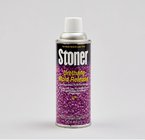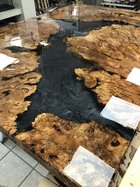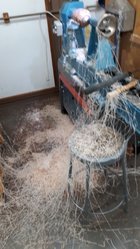Breck, There are three types of resins to choose from, polyester, urethane or epoxy. Polyester is fiberglass resin and sold in stores labeled "Clear Casting resin". It takes a small amount of harder to set it off . It is very volume sensitive and gets excessive temps easily and it really really stinks. I don't recomend it.
Epoxy resins are what is typically used for the table pours where gallons of the product are used. It can be a 1-1, 2-1, 3-1 mix depending on the type and brand. It can be used without pressure potting but pressure potting will improve the results. Guys usually use a heat gun or torch to make the bubbles pop as they come to the surface.
Urethane resins are sometimes a 50-50 mix but some of the more expensive crystal clear varieties are a 1-4 which makes calculating volume more problematic. Alumalite, Smooth-On, Polytek, and others have variations of these. The cheaper ones will have a slight amber tone, the better ones will be optically clear. The amber tone is not a problem if you are mixing metallic flake or other colors into the mix. The ones that are optically clear usually have more warnings on the sheet that they are for professional use only. Alumalite slow is a good place to start. Urethanes need to be pressure cast to minimize bubbles. Pressure casting does not remove the bubbles it just reduces the size of them .



